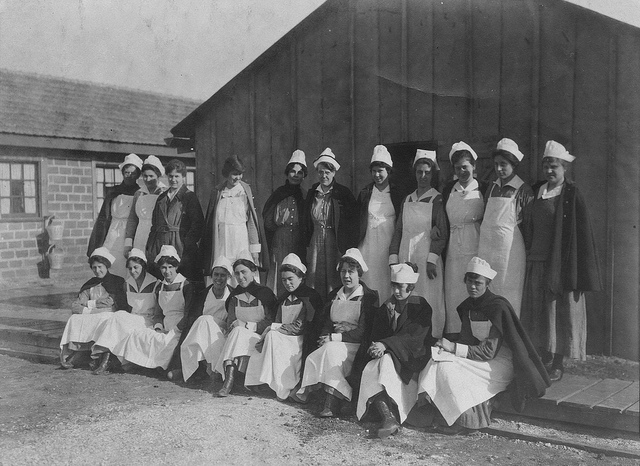
Don’t mention the… Lady days, the origins of Kotex
Even 100 years on, it is hard to imagine the true scale of death and injury caused by World War One. During the heaviest periods of fighting soldiers were getting wounded in such large numbers that the medics often ran out of bandages.
To try help overcome this problem, Kimberly-Clark offered the army a new product of theirs – “Cellucotton” a highly absorbent fluffy paper wadding product that could be used for filters in gas masks, stuffing for emergency jackets but most importantly for pads and bandages.
Co-incidentally the technology for this had been found during a visit to Germany by two Kimberley-Clark executives Ernst Mahler and company president J.C. Kimberley.
Commendably Kimberly-Clark decided they’d sell Cellucotton to the War Department and Red Cross at no profit.
However it was not long after their arrival at the battlefields that a new and completely unexpected use was found for some of the bandages. The female nurses and the nuns tending the wounded started using them for their “Lady Days” (as periods were referred to then). The new bandages worked much better and were more hygienic than the pieces of rags which had been used previously
However when Armistice day arrived and the war was finally over, Kimberly-Clark found it had partially-filled orders for 750,000 pounds of Cellucotton and in another altruistic act Kimberly-Clark allowed these orders to be cancelled without penalty. It left the company with a huge surplus. Worse still, the Army also had a large surplus of Cellucotton – and they began selling it to civilian hospitals at a ridiculously low price, instantaneously killing the market for Kimberley-Clark.
Kimberley-Clark had to try and find a new use for the product and fast.
Lucky word had reached them about their alternative use they decided to try and market them to women as feminine hygiene pads or napkins
The newly rechristened Cellunaps were positioned to retailers as the first disposable sanitary napkin. Retailers, though seeing the potential, were worried about public sensitivity and insisted they were not suitable to be placed on public display, and so must stay behind the druggists’ counter.
Sales did not go well. Women were not happy to ask the mostly male assistants for them at the counters.
 Kimberley Clark decided on a new approach. They changed the name to KOTEX, a meaningless worger (word merger) of c[K]Otton-like TEXture that would hopefully not reveal anything in a crowded drugstore. The second and perhaps crucial change was the introduction of counter displays so that women could buy their Kotex without talking to the clerk. At the time this was not something that every retailer immediately agreed to, but as results were soon to show it solved the problem of a product people didn’t want to really talk about, and definitely didn’t want to ask a member of the opposite sex for.
Kimberley Clark decided on a new approach. They changed the name to KOTEX, a meaningless worger (word merger) of c[K]Otton-like TEXture that would hopefully not reveal anything in a crowded drugstore. The second and perhaps crucial change was the introduction of counter displays so that women could buy their Kotex without talking to the clerk. At the time this was not something that every retailer immediately agreed to, but as results were soon to show it solved the problem of a product people didn’t want to really talk about, and definitely didn’t want to ask a member of the opposite sex for.
As counter and shelf displays grew so did the sales and the brand.
Footnote : As Kotex sales began to grow, letters started to pour in to the company, mostly favourable but many were from women who wanted to know more about their bodies and the menstrual process. As a result Kimberly-Clark built its Education Division and began mailing out information packs, including a pamphlet called “Marjorie May’s 12th Birthday” which was initially banned in some states for being too sexually explicit.
Later they were to work with the Disney Company to create a movie called “The Story of Menstruation” which would be shown in schools and was seen by over 70 million schoolchildren – a most unlikely most-watched movie from the Disney catalogue.